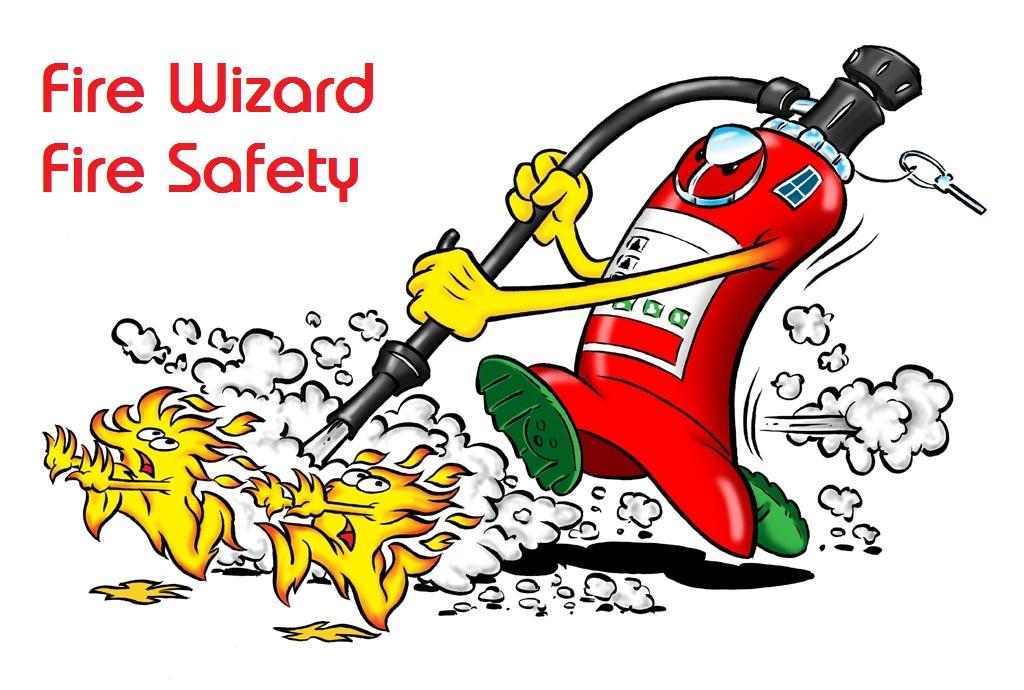-
Posts
2,697 -
Joined
-
Last visited
Everything posted by AnthonyB
-
As the Council are the enforcement body then if they are happy with good fitting solid doors to bedrooms and only a fire door to the kitchen then that's all you need to do - this sounds like a Housing Act HHSRS issue so different guidance applies compared to if you were carrying out work under Building Regulations
-
It's all in BS7273-4 and yes the link should be local to each door.
-
Live plants? With two escapes and a managed use policy then in theory - however they would need regular watering and care as if they die of and dry out they would be a hazard and would likely fall below the required fire performance for a circulation area of Class 0/Euro Class B-s3,d2 if treated as a wall lining.
-
The risk assessor is correct and reflects the Government guidance that sets out requirements in small premises - domestic smoke alarms are for homes not places of work: https://www.gov.uk/government/publications/making-your-small-non-domestic-premises-safe-from-fire Means of giving warning in the event of a fire In single storey premises with open plan layouts and small numbers of people, the alarm could be raised by shouting ‘fire’. Alternatively, the alarm could be raised manually, using a hand-operated bell or siren. In premises of more than one storey, where the above method of giving warning would be unreliable, an electrical fire alarm system should be installed. These systems should have ‘break glass’ call points and fire alarm sounders, connected to a control panel. In premises of more than one storey, where a fire might start and be undetected in its early stages, the fire alarm system might need to incorporate automatic fire detectors. These will generally be smoke detectors or, in the case of kitchens or other rooms in which smoke detectors would cause false alarms, heat detectors).
-
https://envirograf.com/product-category/electrical-and-plumbing/
-
Who is the freeholder? Is it a third party or is it yourself and the other owner jointly? Whoever it is holds responsibility in law for the common internal and external areas and is required to complete a Fire Risk Assessment under the Fire Safety Order which would determine if a linked alarm is required - potentially with sufficient fire resistance between the properties you might not require one and a small ground floor only lobby doesn't need smoke control. I was involved in a FTT case in a similar set up where excessive measures were installed and they were expected to pay towards them so took it to tribunal and with my help won so I am familiar with the scenario
-
Building regs kicks in with a higher category for dwellings three or more stories only where the dwellinghouse is 'large' with at least one floor being over 200sq.m. in which case it jumps to LD2 as well as a Grade A system. It does open the door to higher categories if there is a consideration of a special risk, referring then to BS5839-6 which would indicate LD2 - but they persist in only prescribing LD3 other than for large dwellings, using sprinklers instead for dwellings that reach 4+ stories
-

When selling flat, do I need a fire risk assessment?
AnthonyB replied to a topic in Fire Risk Assessments
The legislation affecting flats in England do not apply in Scotland, which has it's own legislation that exempts dwellings including any common areas from needing a FRA - the only duty is to maintain any fire service facilities (e.g. dry risers, etc) -
LD3 (hallways/landings) is still the minimum in England
-
Most people don't know about this and even less enforce it. Up and down the country mags are still being installed with no regard to EN 13637 Electronically Controlled Escape Systems (for use on escape routes). Unless official guidance is updated & new standards insisted on by AHJ's it will be a while before any noticeable change
-

Legal requirement for FRA document in block of 6 flats?
AnthonyB replied to SamF's topic in Fire Risk Assessments
Commercial tenant will be responsible for the FRA of that unit. Residential units are private dwellings so wouldn't need internal FRAs Building has 2 or more dwellings so would in theory need an FRA covering the external fabric of the building -
If you are in England you can have what you want if it's your own private dwelling. If your budget stretches to it the optimum cover is LD1 which is virtually everywhere (as you have described). LD2 (hallways/landings, kitchen & principle habitable room) is a good in-between and is quite commonly installed in new builds even where not legally obligated to.
-
Are these flats or commercial? If this is an external stair the following usually applies: Where an external stairway is provided, any door or window (other than toilet windows) opening onto the stairway, or within 1.8 metres horizontally or 9 metres vertically of it, should be fire-resisting. Windows should be unopenable and doors should be self-closing. In exceptional circumstances, a small number of unprotected, openable windows may be allowed, provided that the rooms containing them are separated from the rest of the building by fire-resisting construction and the external stairway is not the only one from the upper storeys.
-
If the original panel was asbestos this will have been the original fire rated enclosure - a 1960's block would indeed have compartmentation (see CP3 Chapter IV Part 1) and if this has been altered worse then original it needs remediation - however if it is now stopped at each floor you could potentially argue that this has been used as an alternative approach to remediation that provides the same level of protection. This should be determined as part of fire risk assessment, retrospective fire strategy and the safety case.
-
Fixed shut usually means incapable of opening. What reason was given for changing them - where are they?
-

Replacing Lipping on FD30 flat entrance doors
AnthonyB replied to richardinnorwich's topic in Fire Doors and Accessories
The inspection you've copied does give repair options so as long as the FRA considers a repaired door acceptable for the risk you are fine - are these certified or notional doorsets? If certified then it may be necessary to contact the manufacturer to check that the repairs required can be completed without affecting certification as you shouldn't be making the situation worse/to a lower standard than the original installation. -
Many in the fire sector have little faith in building control either! Anything other than major redevelopment rarely goes through Building Regs (even if it should) and fire strategies are still rare for pre-1991 projects (& missing in action over the years for many that don't). The Fire Safety Order and associated Secretary of State guidance make it clear that the assessment should determine if provisions are adequate and to remediate as appropriate - that there are too many risk assessors that don't actually risk assess or act holistically is another matter and I'd agree there is an issue there to address!
-
Possibly, but not necessarily - difficult to say without looking although if the bottom of the windows are at or above 1100mm height this usually precludes the requirement for fire rated windows on an open deck so there may be no requirement under current risk assessment guidance to make this change.
-
https://window.rehau.com/uk-en/pvcu-windows-doors-composite-curtain-walling/pvcu-rehau-windows/fire-rated-windows
-
One of the many defects that contributed to the multiple fatalities at the Rosepark Care Home fire was inadequate separation in the roof void. In a roof void cavity barrier's should be installed directly in line with any compartment walls below, but if the ceiling is fire rated the cavity barrier's are not required to be inline with the walls below and are used to reduce the roof space to maximum 20m in length - but they are still provided. The issue is that a fire rated ceiling is normally only tested from below for fire resistance and not from above, so a fire in a roof void could compromise the ceiling in less than the required time of fire resistance. Fires have also spread externally into roof voids via window & wall cavities and from windows by passing the suspended ceiling. A Building Control approval doesn't mean that much as there are so many buildings passed despite latent defects. Being 2016 it should be to current standards as they were in place back then as well. The risk assessors have failed to take into account that it's a Care Home - if it was an office or similar with simultaneous evacuation there may be a case for risk based evacuation based on AFD alone, but for a sleeping risk premises with vulnerable occupiers requiring assistance to evacuate and likely to be operating progressive horizontal evacuation it is critical that the highest level of compartmentation is maintained as it's not going to have a 3 minute evacuation time!
-
Plenty of legacy building predate fire strategies and engineers and it was the fire service originally and now the risk assessor which determine adequate precautions. Building Regulations are one thing, but once the building is occupied they take a back seat and the fire regulations are quite clear that for occupied buildings the FRA decides what's needed
-
Told by who? Investigation periods of up to 6 minutes are acceptable within BS5839-1 for the fire alarm system and with the category of fire alarm and amount of fire resisting construction is not unreasonable to accept in a fire risk assessment. Check the local brigades Automatic Fire Alarm policy - although sleeping risk at night should get an automatic response on call only they may require evidence of a fire other than the alarm activation first. Nothing so exact is 'law' as the legislation simply sets broad functional requirements, not prescriptive detail - the fire risk assessment is the main driver to determine necessary measures.
-

Separation between floors in service risers
AnthonyB replied to st1's topic in Fire Risk Assessments
You've asked this in another post - remember if you are talking about an existing building ADB isn't relevant as that's for new building design and significant alterations - the Fire Safety in Purpose Built Flats guide is more suitable -
What is in it? Electrical distribution cupboards, whilst not compartments per se, are generally enclosed in fire resisting enclosure to protect adjoining areas. Each flat has to be a compartment so unless it was part of the flat (i.e. containing only the flats distribution board and accessed from a door in the flat) you would expect the wall facing the flat to be a compartment wall.

